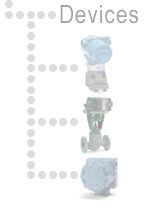 In a post last week announcing an update to the Foundation Fieldbus Segment Design Tool, and another post highlighting its availability to members of the DeltaV LinkedIn group, Emerson’s Jonas Berge shared some excellent thoughts that I wanted to pass along to you. You may recall Jonas from numerous posts over the years.
In a post last week announcing an update to the Foundation Fieldbus Segment Design Tool, and another post highlighting its availability to members of the DeltaV LinkedIn group, Emerson’s Jonas Berge shared some excellent thoughts that I wanted to pass along to you. You may recall Jonas from numerous posts over the years.
In the LinkedIn group post, Jonas wrote:
Great that this EPC/consultant tool now supports the FF H1 card with integrated power. This card is one of the most significant developments in process control in a long time. The fieldbus trunk from the field junction box lands directly on the H1 card in the system cabinet completely eliminating the intermediate marshalling cabinet. This drastically reduces the footprint. By my estimate, a separate fieldbus power supply module is about the same size as an H1 card, so by eliminating the separate fieldbus power supply, the footprint is halved. I believe this is what fieldbus was supposed be like, and now it is.
So where is all the signal marshalling done? It is all done from software because multiple signals from multiple devices are “virtual”, riding on the shared pair of wires. In DeltaV Control Studio each signal finds its way to its place in the control strategy at a click of a button. To make any changes, just click again. For instance, if you need to change the design from an on/off valve to a control valve or electric actuator / motor operated valve (MOV) you do so in software even though the number and type (scalar/analog or discrete) of signals used is different because the fieldbus interface on these devices is the same and the signals are virtual. I believe this ease of “editing” from software is what going completely digital is all about.
He followed up with a second post:
I’d also like to take the opportunity to mention that you need not do segment validation for each and every bus segment in the plant. For “megaprojects” there may be hundreds or even a thousand bus segments. You don’t need to do this validation a thousand times over. Just validate a few of the worst case scenarios. For instance, if you design for max 10 devices with 20% spare, that is 12 devices and max 1000 m of trunk cable, you can estimate an average of 20 mA power consumption per device. Once you confirmed that this “typical” works, you don’t have to validate again for any bus segments with fewer devices or shorter cable. This saves you the trouble of figuring out exact cable section length and device mix etc. If you have a couple of extremes with even heavier loaded bus segments, or even longer distances, check those. That is, if you need to stretch to 14 or even 16 devices on some bus, or to 1.2 or 1.9 km, then you should validate it separately. This is what I believe is the most practical way to unleash the flexibility of a completely digital architecture.
I hope this guidance helps in your projects, which include Foundation fieldbus technology.




